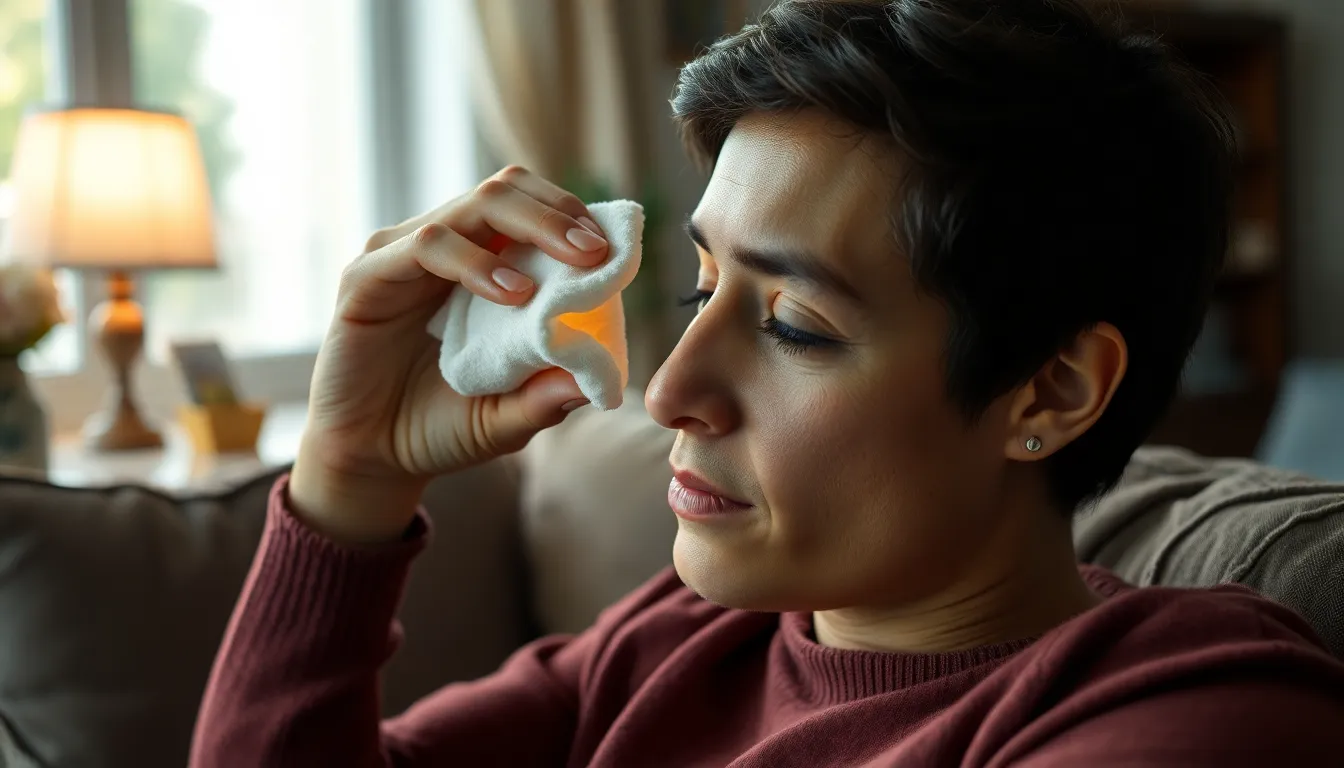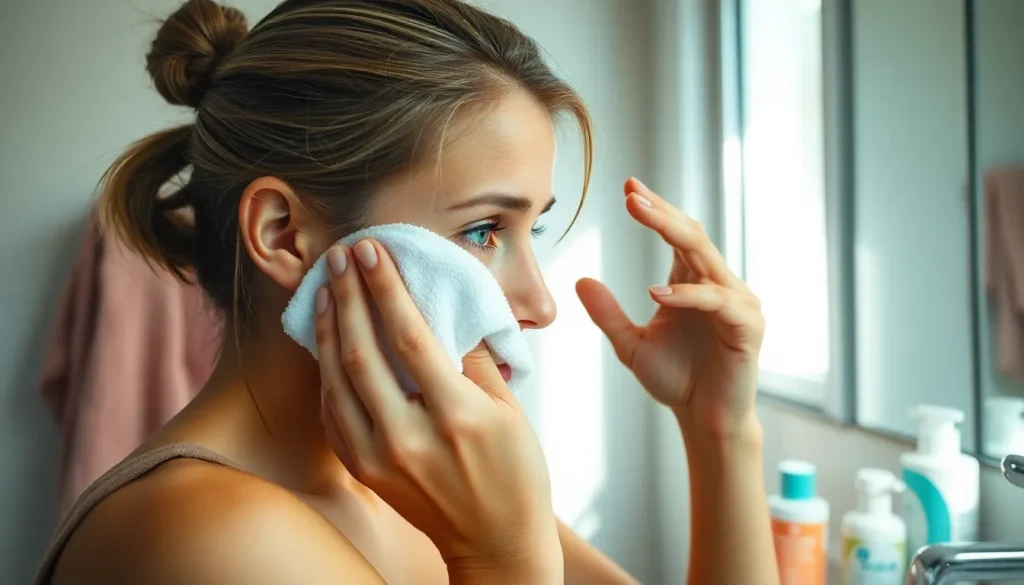Dealing with a stye can feel like having an unwelcome party crasher at your eye. It’s red, swollen, and just won’t take a hint to leave. But don’t worry; there’s hope! With the right tips and tricks, you can send that pesky little intruder packing and get back to living your best life—sans the eye drama.
Table of Contents
ToggleUnderstanding Styes
A stye creates discomfort at the edge of the eyelid. Recognizing its characteristics and symptoms can aid in proper management.
What Is a Stye?
A stye, or hordeolum, appears as a red bump near the eyelash line. This bump results from an infected oil gland. Often, bacteria like Staphylococcus contribute to its formation. Styes can develop on the outside or inside of the eyelid. The location influences the severity of symptoms and discomfort.
Common Symptoms
Symptoms of a stye typically include localized swelling. Tenderness around the bump can occur, adding to discomfort. Redness around the eyelid is common as the body responds to infection. Watery eyes or crusty discharge may develop as the condition worsens. In some cases, patients experience blurred vision. If symptoms persist or worsen over a few days, seeking medical advice proves essential.
Home Remedies for Styes

Several home remedies can effectively reduce discomfort and promote healing of a stye. These methods often provide relief and enhance the recovery process.
Warm Compress Treatment
Applying a warm compress significantly aids in alleviating symptoms associated with styes. This method involves soaking a clean cloth in warm water, wringing it out, and placing it over the affected eyelid. Doing this for 10 to 15 minutes several times a day promotes circulation and helps clear the clogged oil gland. Heat encourages drainage while easing pain and swelling. It’s essential to ensure the compress isn’t too hot to avoid burns.
Natural Antiseptics
Utilizing natural antiseptics can assist in fighting bacterial infections linked to styes. Tea tree oil, known for its antimicrobial properties, proves effective when diluted with a carrier oil, such as coconut oil. Applying a small amount with a cotton swab directly to the stye may aid in reducing bacteria. Another option is honey, recognized for its healing capabilities, which can soothe the inflamed area. Always prioritize cleanliness when using these natural remedies to prevent additional irritation.
Over-the-Counter Solutions
Various over-the-counter solutions can help alleviate the symptoms of a stye. These products offer targeted relief and can accelerate the healing process.
Eye Drops and Ointments
Eye drops and ointments provide immediate comfort for individuals experiencing a stye. These products often contain ingredients that reduce redness and inflammation, providing soothing relief. Some drops are formulated with antihistamines. Others may have anti-inflammatory properties. After applying ocular medications, notice significant improvements in irritation and redness. A pharmacist or healthcare professional can provide guidance on appropriate products.
Pain Relief Options
Pain relief options are critical for managing discomfort associated with a stye. Non-prescription pain relievers like ibuprofen or acetaminophen effectively alleviate pain and reduce inflammation. Taking these medications as directed provides quick symptom relief. Combining oral pain relievers with warm compress application maximizes comfort during recovery. Individuals should avoid putting pressure on the affected area to minimize pain.
When to See a Doctor
Styes typically improve with home care; however, certain signs indicate a need for professional evaluation.
Signs of Complications
Persistent symptoms, such as increased redness or swelling, signal a potential complication. Any development of a fever or spreading infection warrants medical attention. Vision changes may also indicate a problem requiring urgent care. If a stye does not improve within five days despite treatment, consulting a healthcare provider is essential. Additionally, recurrent styes can suggest an underlying condition, emphasizing the need for professional assessment.
Professional Treatments
Medical treatments provide options when home remedies fail. Antibiotic ointments or oral medications may address bacterial infections effectively. A doctor might also recommend draining the stye if it becomes particularly painful or large. Corticosteroid injections can reduce inflammation for some patients. When over-the-counter options do not suffice, visiting a healthcare provider ensures appropriate intervention and relief.
Prevention Tips
Preventing a stye involves maintaining eye health and avoiding practices that can lead to infection. Implementing effective strategies can significantly reduce the risk of developing a stye.
Good Hygiene Practices
Washing hands frequently remains crucial. Cleanliness prevents bacteria from transferring to the eyes. Keeping makeup brushes and applicators clean also protects against potential infections. Avoid using old or shared cosmetics; these often harbor harmful bacteria. Regularly cleansing the eyelids with mild soap or eyelid scrub can help remove debris and oil buildup. Following these steps not only promotes eye health but also significantly reduces the chances of stye formation.
Avoiding Irritants
Staying away from irritants is essential for reducing inflammation. Avoid touching or rubbing the eyes, as this can introduce bacteria. Smoky or dusty environments can trigger irritation, so consider using protective eyewear when exposed to such conditions. Limiting contact with allergens, such as pollen or pet dander, also helps minimize the risk of complications. Lastly, using hypoallergenic products for skincare and makeup can provide an extra layer of protection against irritation and stye development.
Dealing with a stye can be frustrating but it’s manageable with the right approach. Utilizing warm compresses and natural remedies can provide relief and support healing. Over-the-counter treatments are also effective in alleviating symptoms and speeding up recovery.
However, if symptoms persist or worsen it’s crucial to seek medical attention. Maintaining good hygiene practices and being mindful of irritants can significantly reduce the risk of future styes. By following these strategies individuals can protect their eye health and ensure a smoother recovery process.




